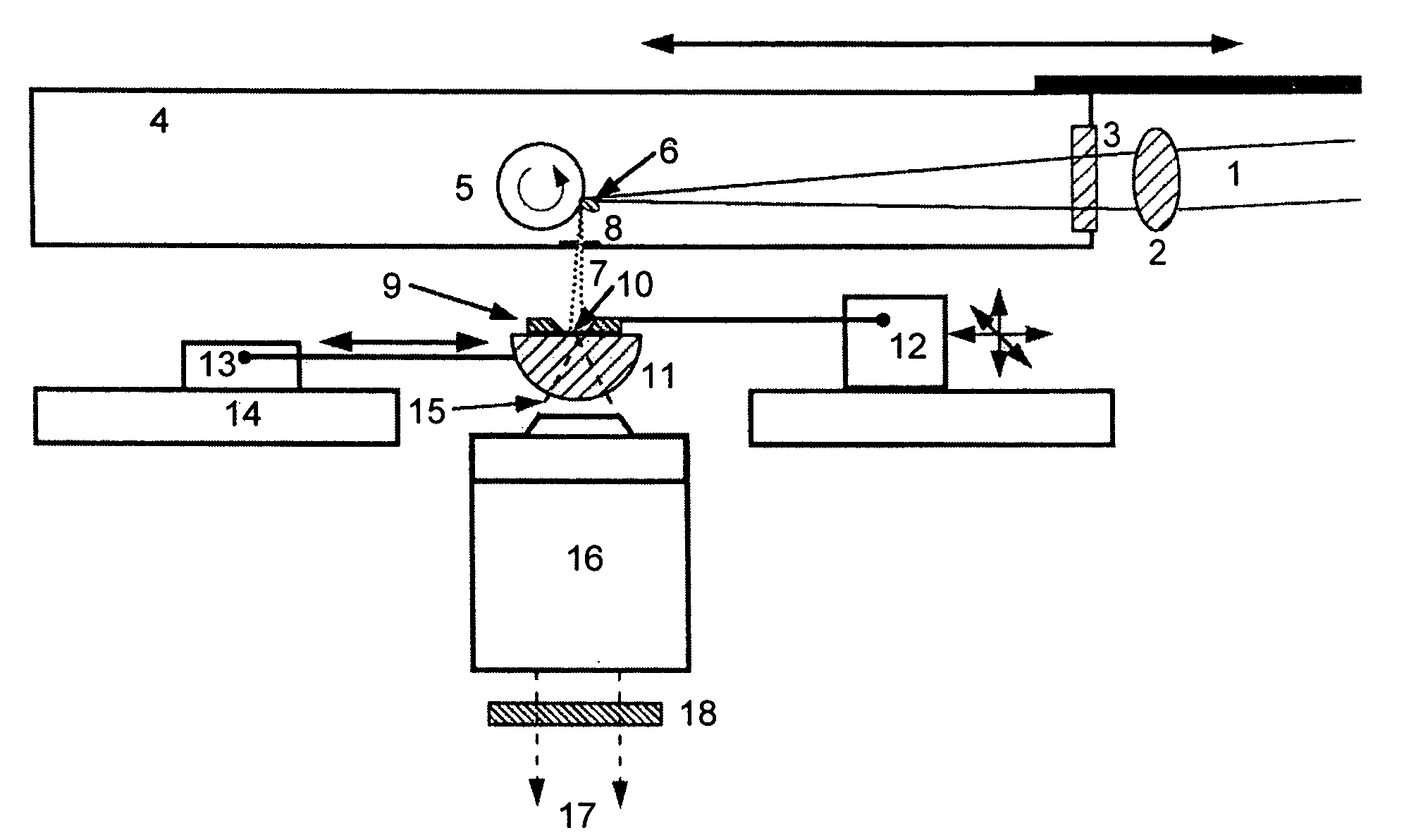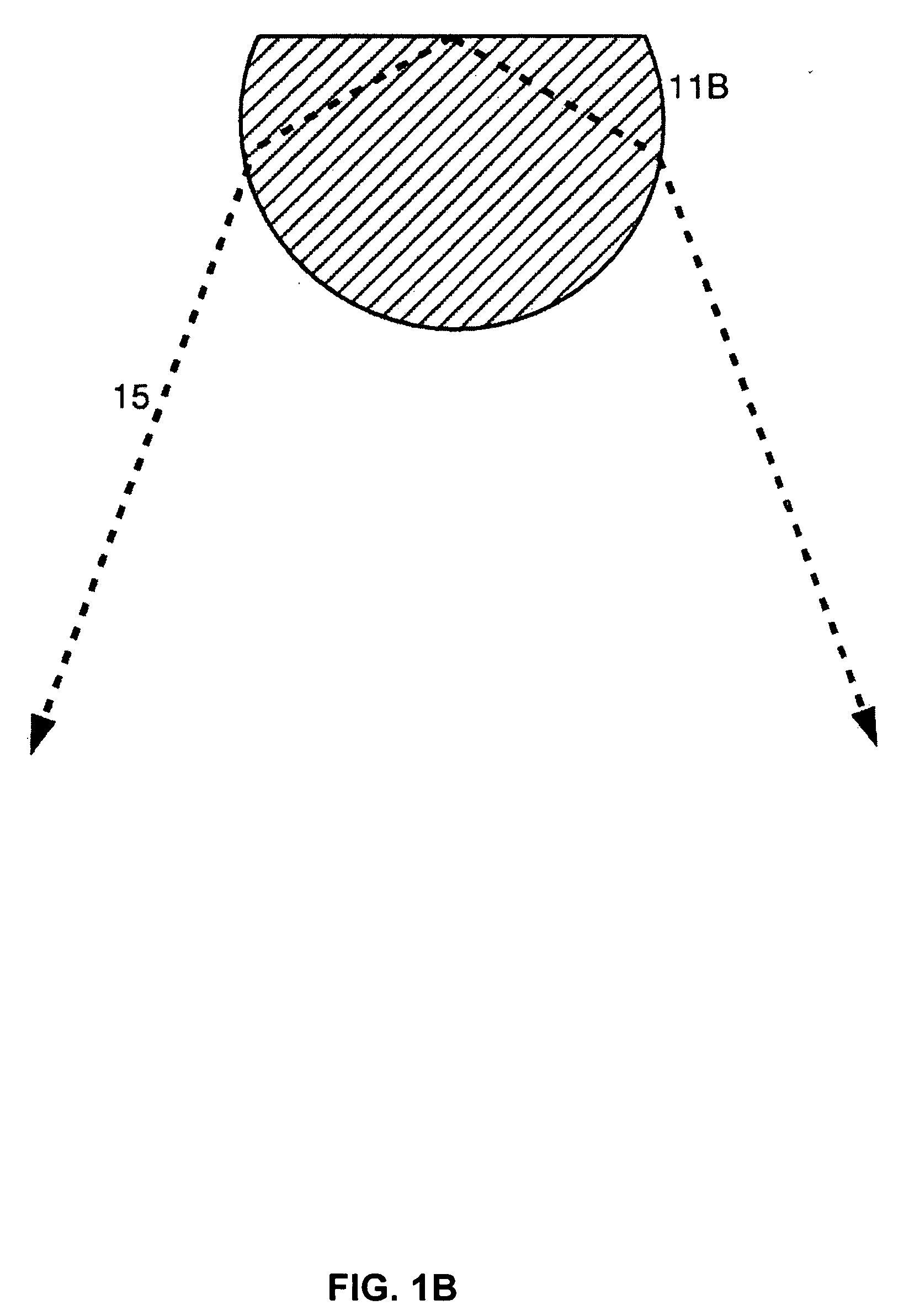Methods for achieving high resolution microfluoroscopy
a microfluoroscopy and high resolution technology, applied in the field of high resolution microfluoroscopy, can solve the problems of limited spatial resolution, electron microscopy, saturation and nonlinear response of contact techniques, etc., and achieve the effect of improving resolution
- Summary
- Abstract
- Description
- Claims
- Application Information
AI Technical Summary
Benefits of technology
Problems solved by technology
Method used
Image
Examples
Embodiment Construction
[0032] Two potential methods to push the resolution limit of the current instrument into the range of 0.1 μm and below are disclosed here. [0033] 1) Recently developed Solid Immersion Lens (SIL) technology is introduced into the light microscope's optics. Such lenses achieve an extremely high Numerical-Aperture (NA), permitting maximum resolution. In parallel with realizing the highest possible NA, the shortest practical emission wavelength for the fluoroscopic medium can also be used to attain the highest resolution. The solid immersion lens functions both as a high-resolution optical element, and as the scintillator of the microfluoroscope. [0034] 2) A scanning method is incorporated into the microfluoroscope to greatly improve the resolution. This approach relies on the use of an innovative nanochannel mask. The scanning procedure permits a resolution that is several times smaller than obtainable with any far-field optical microscope. This scanning method may also be found advant...
PUM
 Login to View More
Login to View More Abstract
Description
Claims
Application Information
 Login to View More
Login to View More - R&D
- Intellectual Property
- Life Sciences
- Materials
- Tech Scout
- Unparalleled Data Quality
- Higher Quality Content
- 60% Fewer Hallucinations
Browse by: Latest US Patents, China's latest patents, Technical Efficacy Thesaurus, Application Domain, Technology Topic, Popular Technical Reports.
© 2025 PatSnap. All rights reserved.Legal|Privacy policy|Modern Slavery Act Transparency Statement|Sitemap|About US| Contact US: help@patsnap.com



